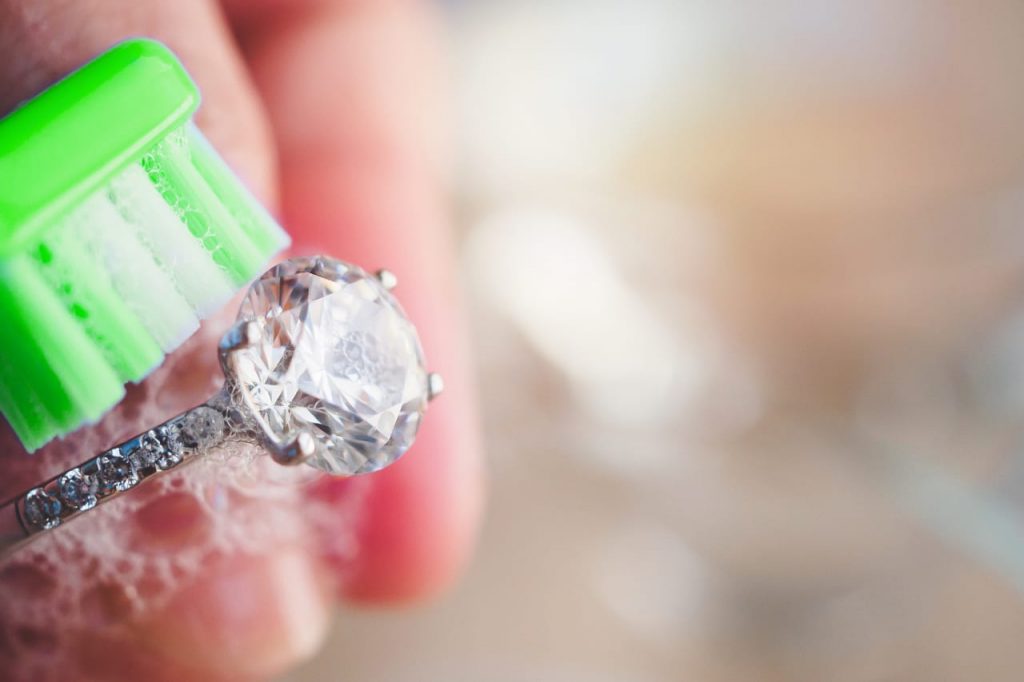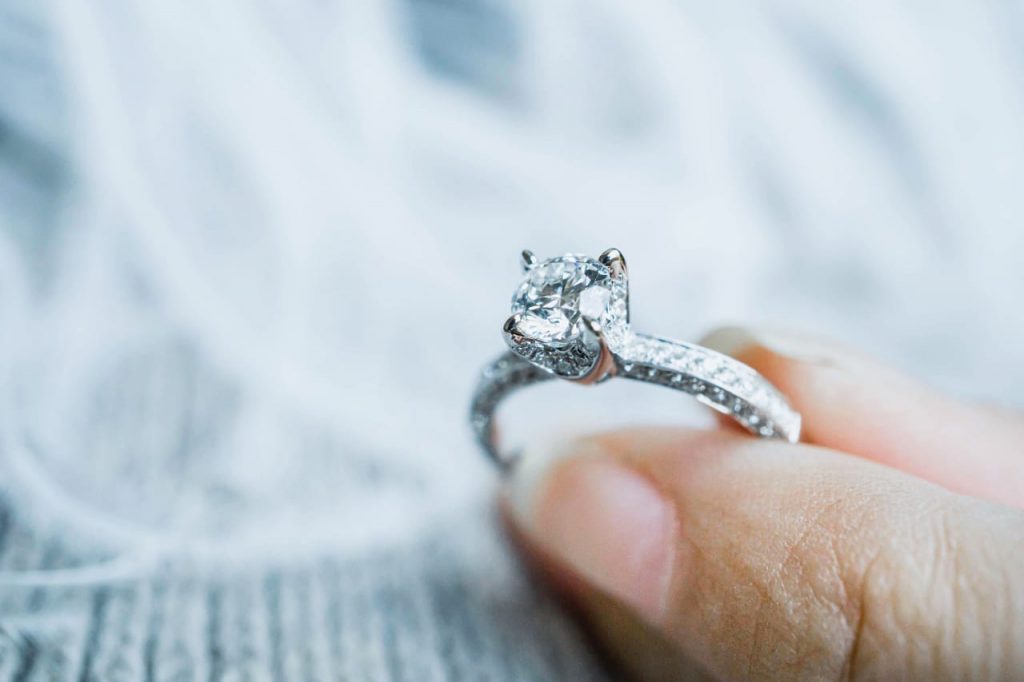Cooking, cleaning, shaking hands, shopping, going to the toilet (yes I said it) are just some of many daily occurrences and activities which lead to the build-up of dirt in our jewellery, namely rings. Furthermore, our own bodily fluids are most responsible and one cannot fathom the level of grossness I have observed. On the contrary, we can be the most diligent when it comes to hygiene and grime will still appear in our jewellery. It’s unavoidable and time will have its way. What is in our control are good cleaning habits.
The ‘how to’ is what most surprises. The tools are sitting in every bathroom cabinet and taking a few minutes out of our days once a week can make a world of difference. Detailed below are the tools and steps.
- Soft bristle toothbrush
- Bar of soap
- Warm water

1. Using a bar of soap, slowly while holding the bar under warm water, rotate the toothbrush until you get an almost paste. The result will be a mushy consistency.
2. Below the gemstone settings, softly rotate in circles and every 20 seconds rinse the piece. Continue to do this for 3 minutes.
3. Very lightly clean the surface using the same process (where the gemstone settings are) but be very sure not to press too hard. The bristles can sometimes get stuck in between the claws and this can compromise your settings (note. If your claws are getting stuck on an item of clothing immediately take the jewellery off and get them checked at a reputable jeweller. This often means they are sticking out rather than being flush to the setting).
4. Rinse in warm water.
5. Use either a blow dryer on warm (not hot) or a tissue to dry.
6. This should leave you with a piece of jewellery that is sparkling.
2. Below the gemstone settings, softly rotate in circles and every 20 seconds rinse the piece. Continue to do this for 3 minutes.
3. Very lightly clean the surface using the same process (where the gemstone settings are) but be very sure not to press too hard. The bristles can sometimes get stuck in between the claws and this can compromise your settings (note. If your claws are getting stuck on an item of clothing immediately take the jewellery off and get them checked at a reputable jeweller. This often means they are sticking out rather than being flush to the setting).
4. Rinse in warm water.
5. Use either a blow dryer on warm (not hot) or a tissue to dry.
6. This should leave you with a piece of jewellery that is sparkling.
Be aware though that certain gemstones require you to take extra care. Opals, tanzanite, pearls (a product of a living organism) and emeralds require extra care. Opals are made up largely of water, emeralds are more often than not filled with oil (a perfectly acceptable practice), tanzanites don’t appreciate thermal shock (sudden very high or low temperature) and pearls have a very sensitive surface that cannot be polished after damage. It is seldom that damage will occur but extra care is advised.
We don’t need a jeweller to clean our pieces and there is no need to invest in fancy cleaning liquids. They are usually a mix of harsh chemicals that don’t do any better of a job than soap and elbow grease. The best solutions are the simplest; all we need to do is put in the very small amount of time.
Advice with pleasure.
George Ojaimi
NCJV Registered Valuer V0355
Director Ojamie – Jewellery Atelier
Director Jewellery Valuers Melbourne



